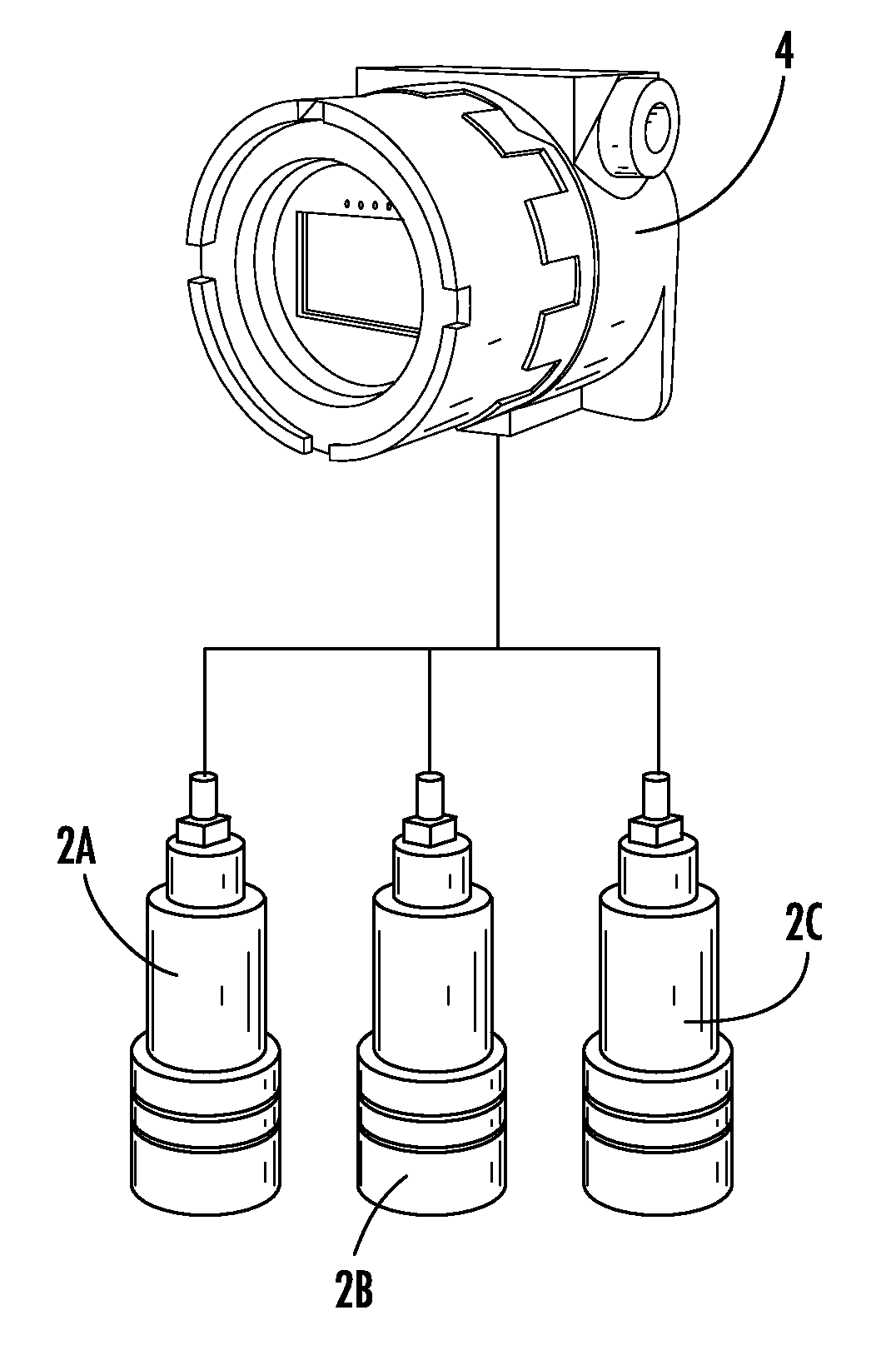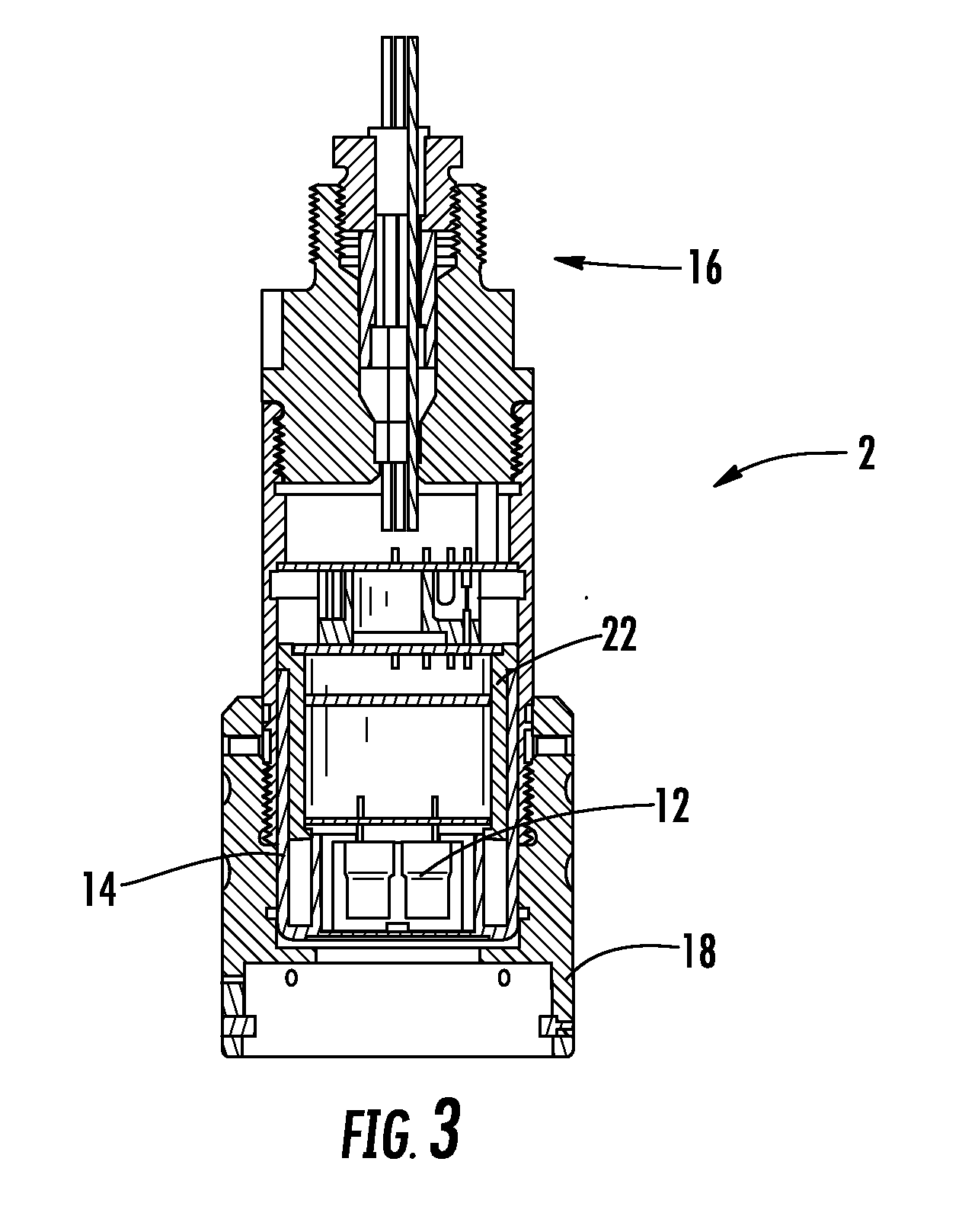System and method for automatically adjusting gas sensor settings and parameters
a technology of automatic adjustment and gas sensor, applied in the field of gas detection systems, can solve the problems of inability to provide automatic recognition and adjustment of sensors to compensate for such losses in sensitivity, premature disposal of sensors that drop below the desired sensitivity threshold, and current systems producing unnecessary waste, so as to reduce the overall cost of ownership
- Summary
- Abstract
- Description
- Claims
- Application Information
AI Technical Summary
Benefits of technology
Problems solved by technology
Method used
Image
Examples
Embodiment Construction
[0032]The disclosed system and method takes advantage of advances in microelectronics and performs final signal conditioning of a sensor using amplification built into microprocessors. This amplification can be software controlled to be arranged in either a differential or additive mode. Additionally, the level of gain can be adjusted in discrete levels, thus allows a wide range of input signals to be accommodated in a single circuit without resorting to changing in discrete components.
[0033]Three applications are realizable. First, a single sensor can be built for a specific gas, and the range of the sensor can be optimized for a particular application. For example, one sensor can be provided in either a 0-10 ppm or 0-100 ppm range simply by changing software parameters. Secondly, variations in sensor sensitivity can be accommodated over a wider range, leading to greater manufacturing throughput. Previously, sensor kernels had to be screened to ensure their sensitivity could be acc...
PUM
 Login to View More
Login to View More Abstract
Description
Claims
Application Information
 Login to View More
Login to View More - R&D
- Intellectual Property
- Life Sciences
- Materials
- Tech Scout
- Unparalleled Data Quality
- Higher Quality Content
- 60% Fewer Hallucinations
Browse by: Latest US Patents, China's latest patents, Technical Efficacy Thesaurus, Application Domain, Technology Topic, Popular Technical Reports.
© 2025 PatSnap. All rights reserved.Legal|Privacy policy|Modern Slavery Act Transparency Statement|Sitemap|About US| Contact US: help@patsnap.com



